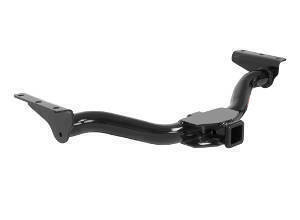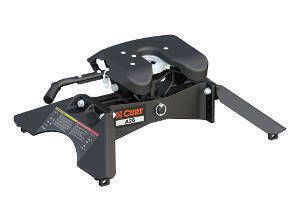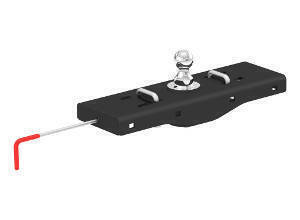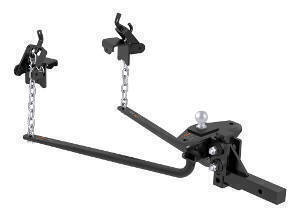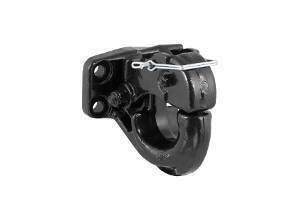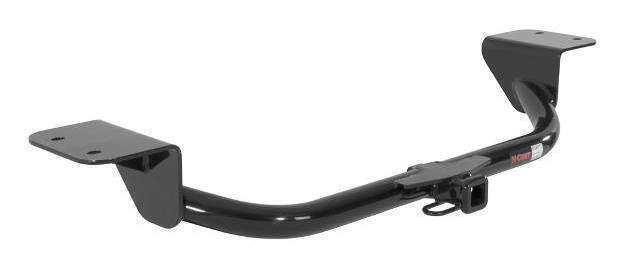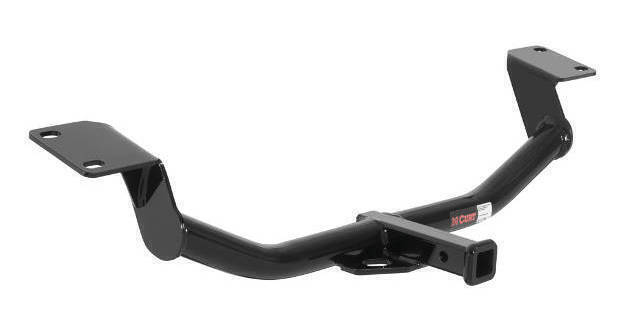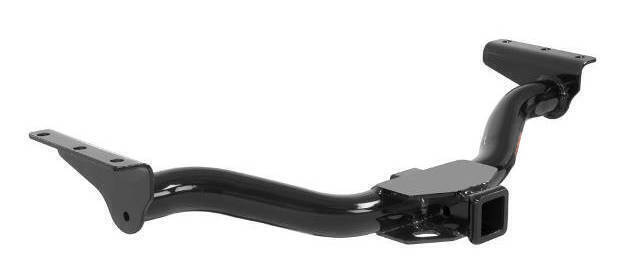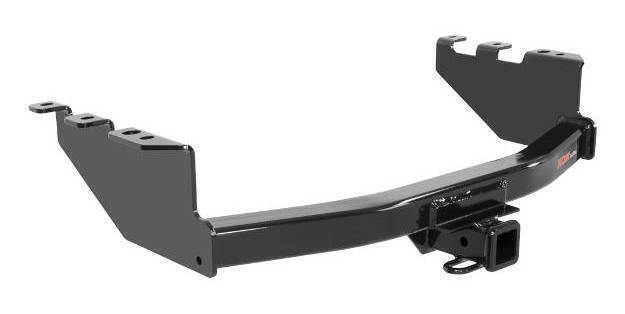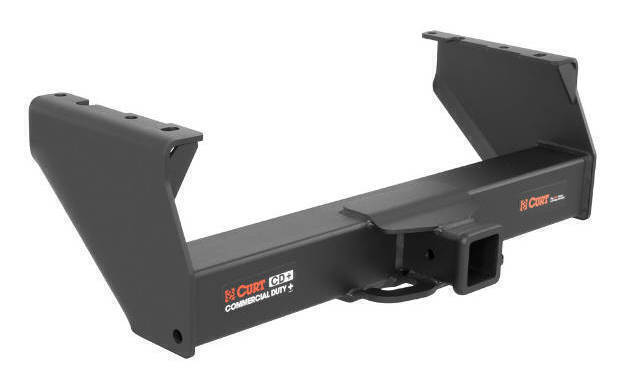Types of Trailer Hitches & Hitch Classes
Chapter 3


What are the different types of trailer hitches?
There are many different types of hitches used for towing a trailer. Receiver hitches are perhaps the most common, divided into 5 classes. Some of the other hitch types include 5th wheel hitches and gooseneck hitches.
Each type of trailer hitch has a unique purpose and coupling style, as well as its own set of capacities and sizes.
Types of trailer hitches
Learn more about different types of towing here
5 Trailer Hitch Classes
Receiver hitches are divided into 5 classes, depending on their towing capacity and receiver tube size. The higher the class number, the higher the capacity and the larger the receiver tube is.
While it is helpful to distinguish between the various tow hitch classes, it is important to note that most receiver hitches are made vehicle-specific. In other words, not all 5 classes are available for each vehicle.
Hitch Class Comparison Chart
| Hitch Class |
Representative Image | Common Applications | Receiver Size |
GTW Capacity (lbs.) |
TW Capacity (lbs.) |
WD Capacity (lbs.) |
WDTW Capacity (lbs.) |
| Class 1 |  |
Cars and crossovers | 1-1/4-inch | Up to 2,000 | Up to 200 | -- | -- |
| Class 2 |  |
Cars, crossovers and minivans | 1-1/4-inch | Up to 3,500 | Up to 350 | -- | -- |
| Class 3 |  |
Crossovers, vans, SUVs and trucks | 2-inch | Up to 8,000 | Up to 800 | Up to 12,000 | Up to 1,200 |
| Class 4 |  |
Trucks and SUVs | 2-inch | Up to 10,000 | Up to 1,000 | Up to 12,000 | Up to 1,200 |
| Class 5 - Xtra Duty |  |
Trucks and SUVs | 2-inch | 16,000 to 17,000 | 2,400 to 2,550 | 17,000 | 2,400 to 2,550 |
| Class 5 - Commercial Duty |  |
Dually and chassis cab trucks | 2-1/2-inch | 18,000 to 20,000 | 2,700 | 18,000 to 20,000 | 2,700 |
| Trailer hitch weight ratings vary by part number. Capacity limited to lowest-rated towing component. | |||||||
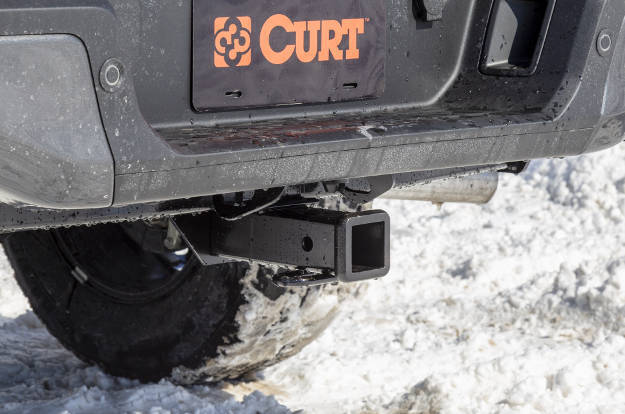

Trailer Hitch Receiver Sizes
There are four standard trailer hitch sizes: 1-1/4", 2", 2-1/2" and 3". The hitch size refers to the inside dimensions of the hitch receiver.
Using a standard hitch size approach allows for more versatile towing options. It enables you to attach a variety of towing accessories to your vehicle, without the need for an adapter or modifications.
Trailer Hitch Class Ratings
Across the five hitch classes, weight ratings vary greatly, from 2,000 lbs. up to 20,000 lbs. Each individual hitch comes with its own specific weight ratings which may or may not reach the maximum range of the designated hitch class.
Remember, your towing capacity is always limited to the lowest-rated towing component, whether the hitch, an accessory, the vehicle, your trailer or any other component of the towing system.
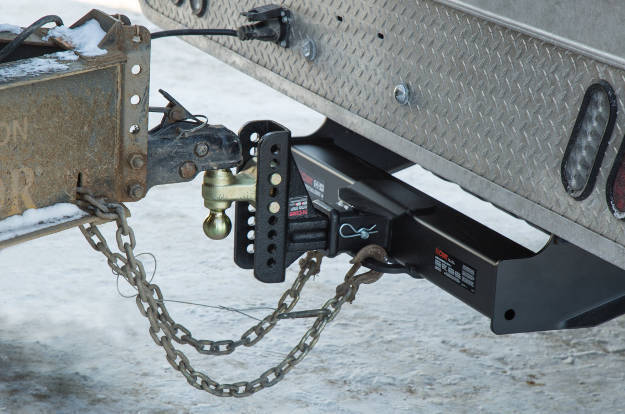

Hitch Class Details
Class 1 Hitches Explained
Class 1 trailer hitches are generally designed for passenger cars and small crossovers. They are equipped with a 1-1/4" x 1-1/4" receiver tube opening or sometimes a fixed tongue to directly mount a trailer ball instead of a ball mount.
Most class 1 hitches are rated to tow trailers up to 2,000 lbs. However, it is important to remember that not all hitches are rated at the same capacity and that no hitch ever increases the maximum weight a vehicle can tow.
Class 1 vs Class 2 Hitch
Class 1 hitches and class 2 hitches both have a 1-1/4" x 1-1/4" receiver tube and are designed for towing light-duty trailers. They also mount onto similar vehicle types, including cars, vans and crossovers.
Class 1 hitches are different from class 2 hitches in that, generally, class 1 hitches have a lower weight rating. While class 1 maxes out around 2,000 lbs., class 2 is typically rated up to 3,500 lbs.
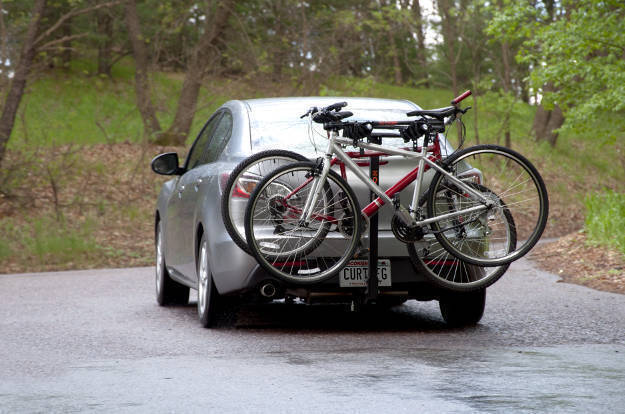

Class 2 Hitches Explained
Class 2 trailer hitches have a 1-1/4" x 1-1/4" receiver tube opening and are used for lightweight towing applications. Most class 2 hitches are able to tow up to 3,500 lbs. gross trailer weight.
Class 2 hitches are typically found on full-size sedans, minivans and crossovers but can also be found on small SUVs and even pickup trucks.
Class 2 vs Class 3 Hitch
Class 2 hitches are quite different from class 3 hitches. Class 2 hitches have a 1-1/4" receiver and generally only go up to 3,500 lbs. GTW. On the other hand, class 3 hitches have a 2" receiver and can range up to 8,000 lbs. gross trailer weight.
Additionally, some class 3 hitches are able to be used with a weight distribution hitch for a towing capacity as high as 12,000 lbs.
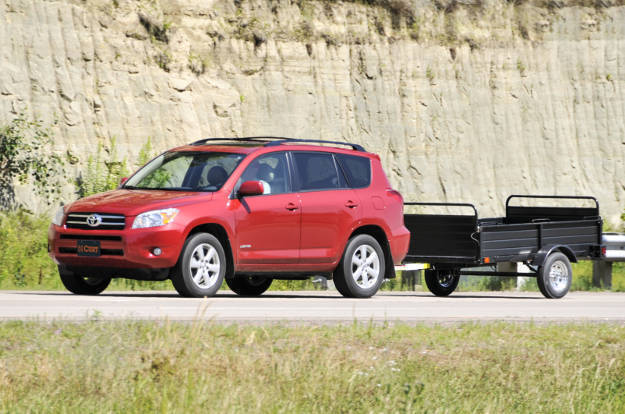

Class 3 Hitches Explained
The class 3 trailer hitch is the most common receiver hitch class installed on full-size pickup trucks and SUVs. If your truck is equipped with a towing prep package, it probably has a class 3 hitch.
CURT class 3 hitches are equipped with a 2" x 2" receiver tube opening and typically have a weight carrying capacity up to 8,000 lbs. gross trailer weight. Some class 3 hitches can also be used in combination with a weight distribution hitch.
Class 3 hitches are extremely versatile, able to tow a variety of trailer types and load size. Not sure how much your trailer weighs? Learn more about trailer weight here.
Class 3 vs Class 4 Hitch
Class 3 hitches and class 4 hitches both have 2" x 2" receiver tubes. Class 3 is different in that class 3 hitch weight ratings are consistently lower than class 4 hitches. This makes class 3 hitches much more versatile in terms of vehicle applications. They are found on everything from crossovers to pickup trucks.
Many class 3 and class 4 hitches are also compatible with a weight distribution hitch though not all. This provides increased weight capacity and control.
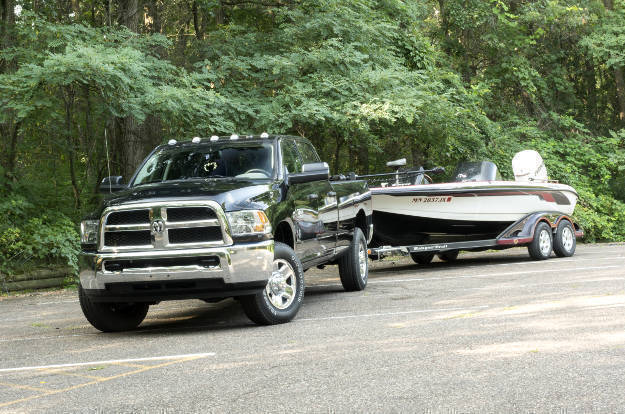

Class 4 Hitches Explained
Class 4 trailer hitches are commonly mounted on full-size pickup trucks and SUVs. They feature a 2" x 2" receiver tube opening and generally have a weight carrying capacity up to 10,000 lbs. gross trailer weight.
Most class 4 hitches can also utilize a weight distribution hitch for ratings as high as 12,000 lbs.
Class 4 vs Class 5 Hitch
Class 4 hitches are fairly different compared to class 5 hitches. Class 4 hitches are generally only rated up to 10,000 lbs. and are restricted to a 2" receiver. One of the only similarities between the two is that some class 5 hitches also have a 2" receiver.
Class 5 hitches, however, are also available with a 2-1/2" receiver and are rated as high as 20,000 lbs., accommodating some of the heaviest tow loads.
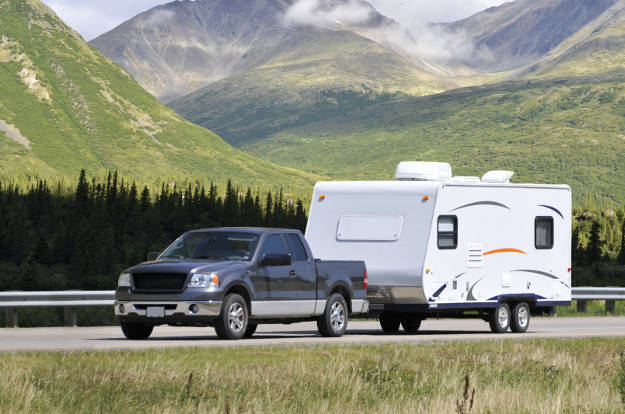

Class 5 Hitches Explained
Class 5 trailer hitches have the highest weight ratings of the receiver hitch classes, offering as much as 20,000 lbs. GTW. They are typically used on full-size pickups and commercial trucks.
CURT offers two types of class 5 hitches. Xtra Duty (XD) class 5 hitches have a 2" receiver and are rated for up to 17,000 lbs. Commercial Duty (CD) class 5 hitches have a 2-1/2" receiver and are rated for as much as 20,000 lbs.
Always choose a trailer hitch that matches your vehicle's towing capacity. You may not need the full capacity now, but if ever you want to pull a larger trailer, it pays to have a hitch that is already equipped to handle the weight.
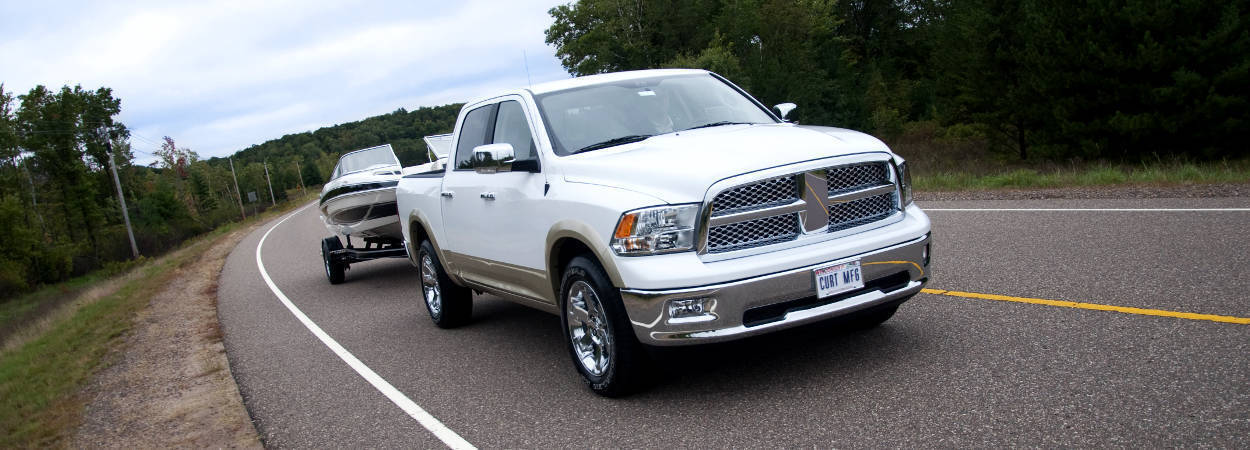
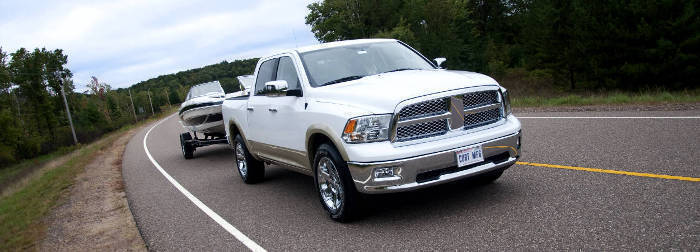
Different Types of Hitch Receivers
There are a few different receiver hitches that may or may not fit within the five classes. Most of them are widely used on vehicles today, and each comes with a standard receive tube size.
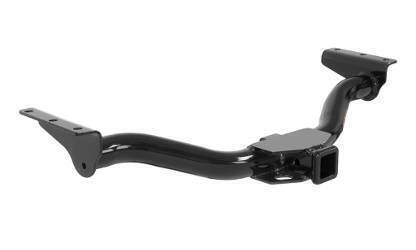

Custom Hitch
This type of trailer hitch is designed for a very specific vehicle application, providing the best fit, easiest install and optimal weight capacity.
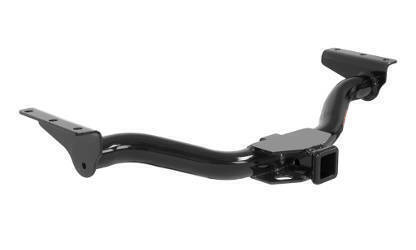

Rear Mount Hitch
This type of receiver hitch attaches to the rear of a tow vehicle, providing a standard receiver tube for hooking up and pulling a trailer.
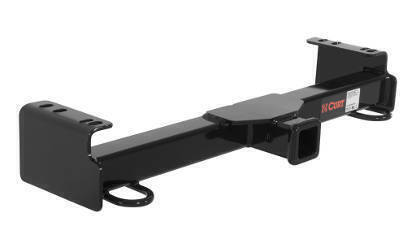

Front Hitch
This type of receiver hitch attaches to the front of the vehicle and provides a standard receiver tube for a snow plow, winch mount and more.
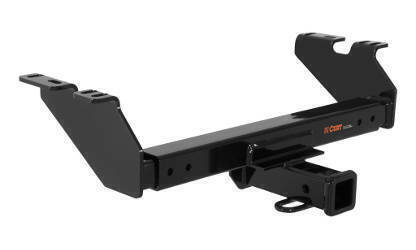

Multi-Fit Hitch
This type of trailer hitch is designed to fit as many vehicles as possible, while providing a standard hitch receiver and on-par weight capacity.
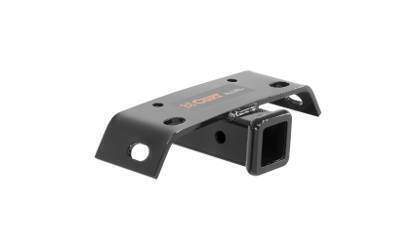

Bumper Hitch
This type of receiver hitch attaches to a vehicle's bumper and provides a standard receiver tube. Its weight capacity is limited to the bumper.
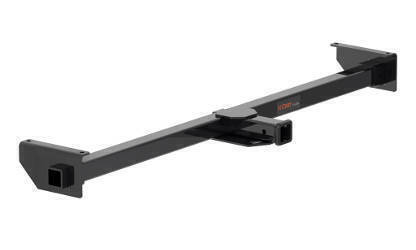

RV Hitch
This type of receiver hitch is specifically designed to mount at the rear of an RV or motorhome to tow a trailer or dinghy tow a vehicle.
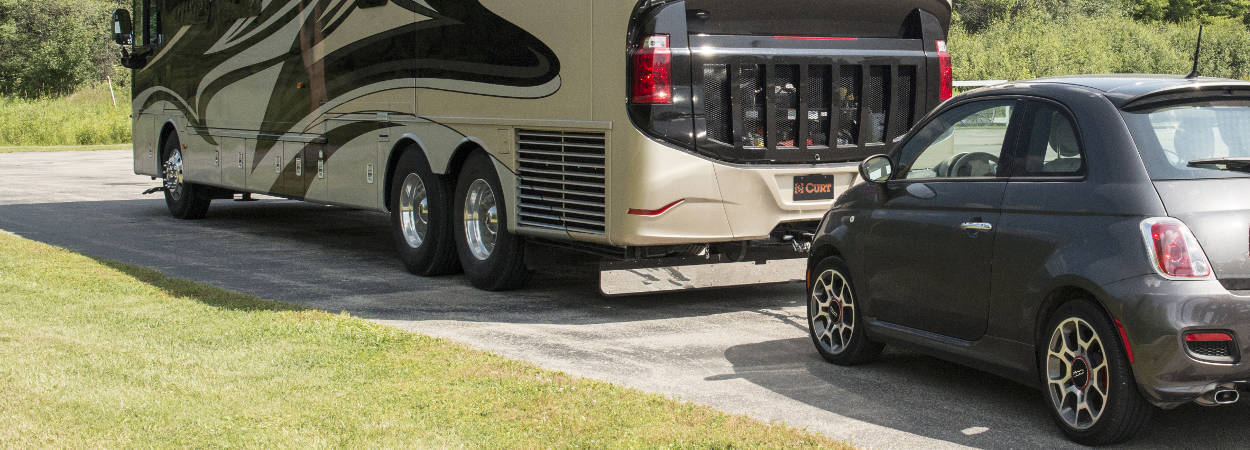
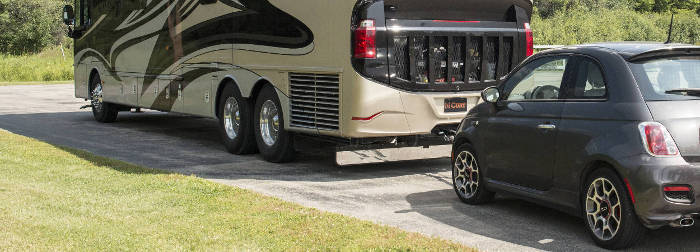
Heavy-Duty Tow Hitch Types
There are a number of different types of tow hitches that do not fall within the receiver hitch classification. These hitches are designed for heavier towing applications and commonly used for towing travel trailers, livestock trailers, flatbed equipment trailers and more.
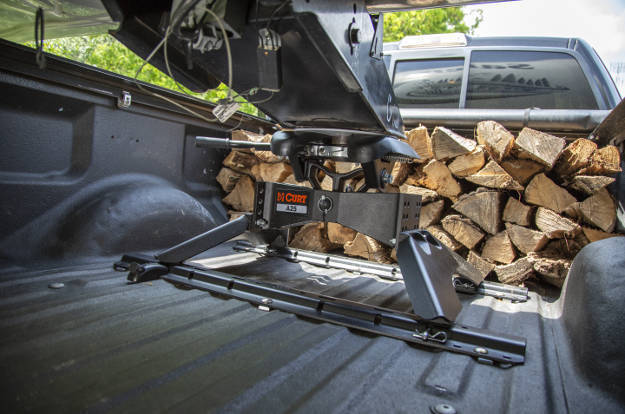

5th Wheel Hitch
A 5th wheel hitch is a heavy-duty truck bed hitch that accepts the kingpin of a 5th wheel trailer. The design is similar to a tractor-trailer coupler.


Gooseneck Hitch
A gooseneck hitch is a heavy-duty truck bed hitch that provides a ball to couple to a gooseneck trailer. Gooseneck hitches are commonly used on farms.
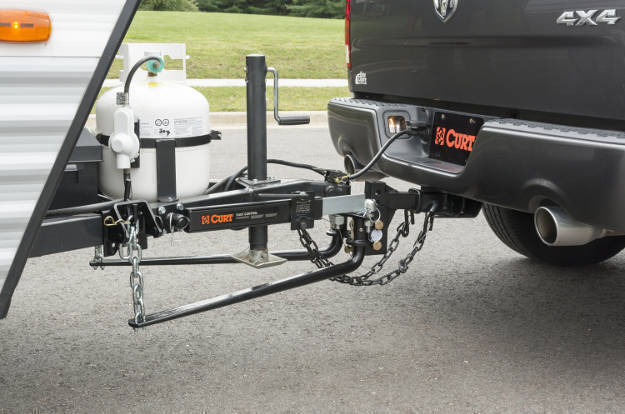

Weight Distribution Hitch
A weight distribution hitch is a receiver hitch attachment. It is designed to distribute the tongue weight of a trailer across the vehicle and trailer for increased control.
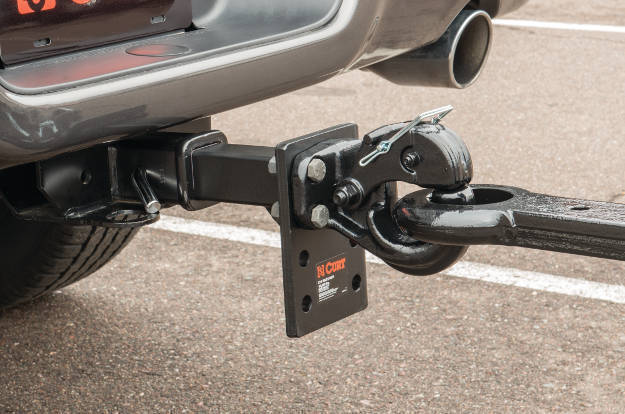

Pintle Hitch
A pintle hitch is a simple but strong coupling mechanism, consisting of a hook and a ring. Pintle hitches are commonly used in agriculture and industrial settings.
Not sure where to start? Look up your vehicle to find a trailer hitch!
 ARIES
ARIES  CURT
CURT  LUVERNE
LUVERNE  UWS
UWS 




